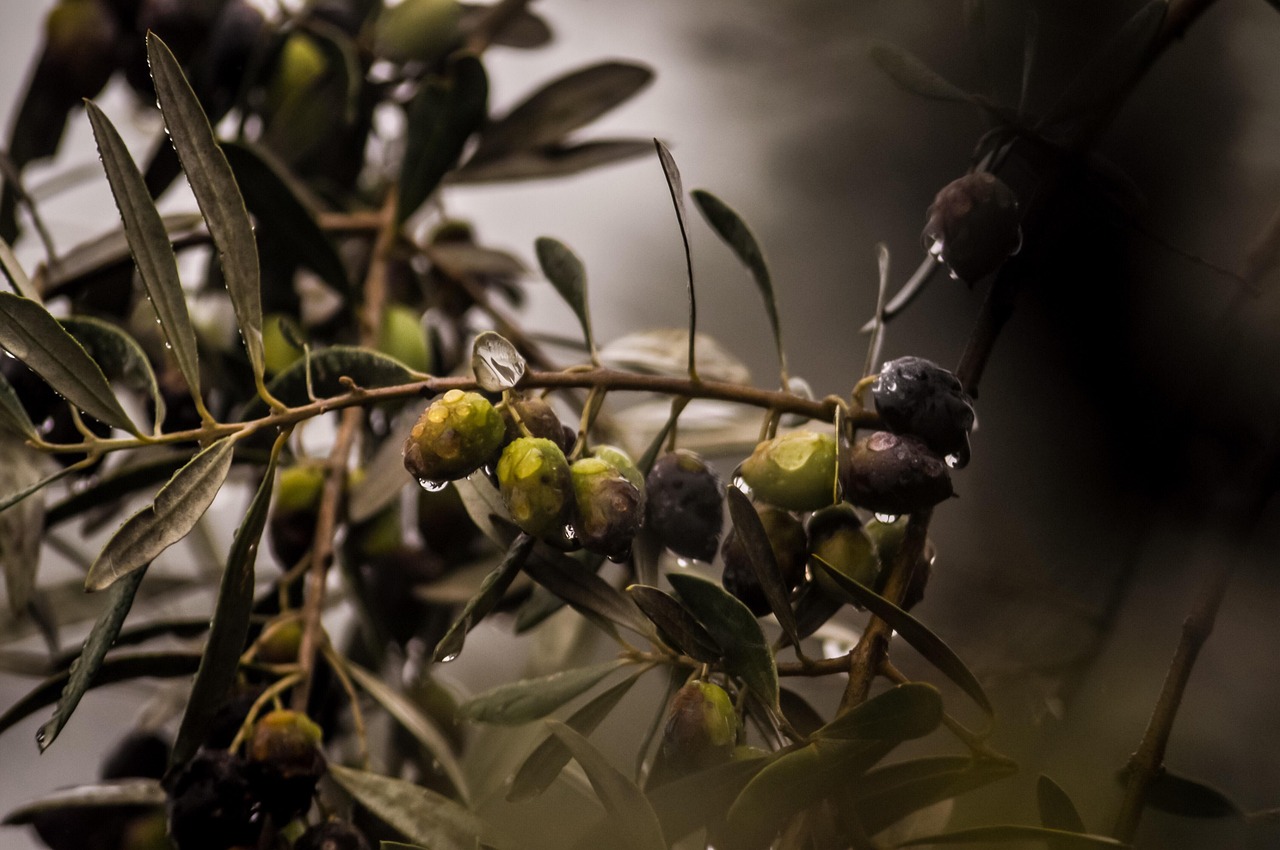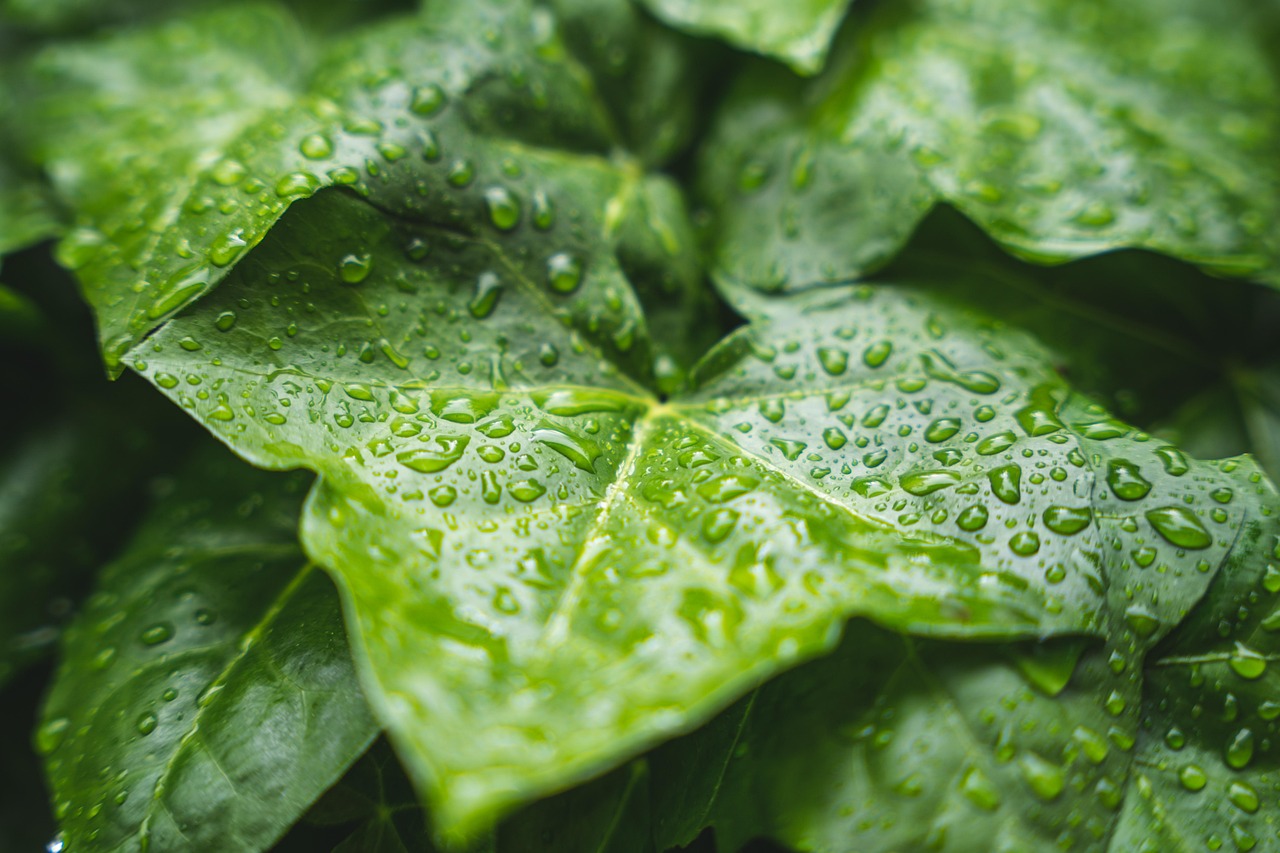The Rain Tree (Samanea saman) typically displays a growth rate of 2 to 3 feet per year in tropical environments, while urban parks may experience slower growth due to factors such as soil quality and environmental stressors.
Understanding the Rain Tree
The Rain Tree is native to tropical regions of Central and South America. It has become widely cultivated in various tropical and subtropical areas around the world due to its aesthetic appeal and shade-providing capabilities. The tree is known for its broad canopy and unique leaf structure, which closes at night, creating a striking visual effect. This responsiveness to light is one of the reasons why the Rain Tree is a favorite in parks and public spaces.

In addition to its ornamental benefits, the Rain Tree plays an essential role in urban ecosystems. It provides habitat for birds and insects, improves air quality, and reduces urban heat through its cooling shade. Understanding the growth rate of the Rain Tree in different environments is crucial for urban planners, landscape architects, and environmentalists who aim to create sustainable green spaces.
Growth Factors
The growth rate of the Rain Tree can be influenced by several factors, including climate, soil conditions, water availability, and maintenance practices. In tropical regions, where rainfall is abundant and temperatures remain warm year-round, the Rain Tree flourishes. Conversely, in urban parks where soil compaction, pollution, and limited water access can hinder growth, the tree may not reach its full potential.
Below are some key factors that affect the growth rate of the Rain Tree:

- Climate: Warm temperatures and adequate rainfall promote faster growth.
- Soil Quality: Well-drained, nutrient-rich soils support healthy growth.
- Water Availability: Regular watering during dry spells can enhance growth.
- Maintenance Practices: Pruning and pest management can improve tree health.
Comparative Growth Rates
The growth rate of the Rain Tree can vary significantly between tropical regions and urban environments. A comparison of average growth rates in different settings is illustrated in the following table:
| Environment | Average Growth Rate (Feet per Year) | Optimal Conditions |
|---|---|---|
| Tropical Regions | 2 to 3 | High rainfall, warm temperatures |
| Urban Parks | 1 to 2 | Moderate rainfall, potential soil stress |
This table highlights the differences in growth rates due to environmental factors. In tropical regions, where conditions are ideal, the Rain Tree can achieve a more robust growth rate. In contrast, urban parks often pose challenges that can restrict growth.
Challenges in Urban Settings
Urban environments present unique challenges for the growth of the Rain Tree. Factors such as soil compaction from foot traffic or vehicle use can lead to reduced root development. Additionally, pollution can affect tree health by hindering photosynthesis and causing leaf damage. Limited space can also restrict root expansion, further impacting growth rates.

To combat these challenges, urban planners are increasingly implementing strategies that support tree health. These may include creating designated green spaces with improved soil conditions or utilizing innovative planting techniques that allow for better drainage and root expansion.
The Role of Rain Trees in Urban Parks
Despite the challenges faced in urban settings, Rain Trees offer numerous benefits to city landscapes. They provide much-needed shade, which helps reduce urban heat island effects. The tree’s expansive canopy also supports biodiversity by providing habitat for various species.
Furthermore, incorporating Rain Trees into urban park designs enhances the aesthetic appeal of these spaces. They serve as focal points in landscapes and contribute to the overall well-being of urban residents by promoting outdoor activities and relaxation.

The understanding of Rain Tree growth rates is essential for the successful integration of this species into tropical and urban parks. By considering environmental factors and implementing appropriate strategies, cities can harness the full potential of Rain Trees to create vibrant green spaces for future generations.
Factors Influencing Growth Rate
Understanding the growth rate of Rain Trees in different environments requires an examination of various influencing factors. These factors can be categorized into environmental conditions, tree genetics, and human intervention. Each plays a crucial role in determining how well these trees will thrive in their respective habitats.
Environmental Conditions
The environmental conditions under which Rain Trees grow significantly impact their growth rates. Key factors include:
- Temperature: Rain Trees prefer warm climates. Optimal growth occurs in temperatures between 70°F and 95°F (21°C to 35°C).
- Rainfall: Adequate rainfall is critical. Rain Trees require about 40 to 100 inches of rain annually for optimal health.
- Sunlight: These trees thrive in full sunlight. Insufficient light can stunt growth and reduce leaf production.
- Soil Type: Well-draining soil rich in organic matter supports better root development and overall tree health.
Tree Genetics
Genetic factors also play a significant role in the growth rate of Rain Trees. Different cultivars may exhibit varying growth rates due to inherited traits. Some trees may be naturally predisposed to grow faster or resist diseases better, which can influence their overall development.
Notably, selecting high-quality seedlings from reputable sources ensures that the plants possess desirable genetic traits that will contribute to their success in urban or tropical settings.
Human Intervention
Human activities can significantly impact the growth of Rain Trees. Proper care and management practices are essential for maximizing growth rates. Consider the following practices:
- Watering: Regular watering, especially during dry seasons, can boost growth significantly.
- Fertilization: Applying organic fertilizers can enhance soil fertility and provide essential nutrients for growth.
- Pest Control: Monitoring and managing pests helps prevent damage that could slow growth.
- Pruning: Regular pruning encourages healthy branching and can promote faster growth by reducing competition among branches.
Growth Rate Variability Across Regions
The growth rate of Rain Trees is not uniform; it varies across regions due to differential environmental conditions and management practices. Here are some notable differences:
| Region | Average Growth Rate (Feet per Year) | Main Influencing Factors |
|---|---|---|
| Southeast Asia | 3 to 4 | High rainfall, rich soil, warm temperatures |
| Central America | 2 to 3 | Variable rainfall, diverse soil types |
| Urban Areas in the U.S. | 1 to 2 | Soil compaction, air pollution, limited space |
The Importance of Rain Tree Planting Strategies
To enhance the growth rates of Rain Trees, effective planting strategies must be employed. These strategies can mitigate the challenges faced in urban environments and support healthier tree development.
Site Selection
Selecting the right site is paramount. Areas with ample sunlight and good drainage should be prioritized. Additionally, avoiding locations with heavy foot traffic can minimize soil compaction.
Soil Preparation
Before planting, soil should be tested to determine its nutrient content and pH level. Amending the soil with organic matter, such as compost, can improve its structure and provide essential nutrients for the Rain Tree.
Planting Techniques
The method of planting also affects growth rates. Following best practices ensures successful establishment. Key considerations include:
- Spacing: Adequate spacing between trees allows for proper air circulation and light penetration.
- Depth: Planting at the correct depth prevents root rot and encourages healthy root development.
- Trellising or Support Structures: For younger trees, providing support can help them grow upright until established.
Implementing these planting strategies is vital for maximizing the growth potential of Rain Trees in both tropical and urban settings. By understanding the factors influencing their growth, stakeholders can create healthier and more sustainable environments for these remarkable trees.
Environmental Benefits of Rain Trees
Rain Trees play a significant role in improving the environment, especially in urban settings where green spaces are limited. Their extensive canopy and unique characteristics provide many ecological benefits that contribute to healthier ecosystems.
Air Quality Improvement
One of the primary environmental benefits of Rain Trees is their ability to improve air quality. Through the process of photosynthesis, they absorb carbon dioxide and release oxygen, making the air cleaner for urban dwellers. Furthermore, Rain Trees can trap particulate matter, dust, and pollutants, effectively filtering the air.
Urban Heat Island Mitigation
Urban areas often experience higher temperatures than surrounding rural areas, a phenomenon known as the urban heat island effect. Rain Trees provide essential shade that helps to cool the surrounding environment. This cooling effect not only benefits residents but also reduces energy consumption by lowering the need for air conditioning.
Water Management
Rain Trees contribute positively to water management in urban areas. Their extensive root systems help to absorb rainwater, reducing surface runoff and mitigating flooding risks. Additionally, by promoting groundwater recharge, these trees contribute to maintaining local water supplies.
Support for Biodiversity
Rain Trees serve as vital habitats for various species, enhancing biodiversity in urban parks and tropical settings. They attract a wide range of wildlife, including birds, insects, and small mammals. This diversity is crucial for maintaining balanced ecosystems.
Wildlife Habitat
The large canopy of the Rain Tree provides shelter and nesting sites for birds and other animals. Many species rely on the tree’s leaves and flowers for food. The following list highlights some common wildlife supported by Rain Trees:
- Birds: Many species such as parrots, orioles, and doves use Rain Trees for nesting and feeding.
- Insects: The flowers attract pollinators like bees and butterflies, essential for ecosystem health.
- Mammals: Squirrels and other small mammals may use the tree for shelter and food sources.
Pollination Support
Rain Trees produce flowering clusters that are rich in nectar, providing a valuable food source for pollinators. By attracting bees, butterflies, and other insects, they play an essential role in pollination processes not just for themselves but also for surrounding flora. Healthy pollinator populations are critical for fruit and seed production in many plants.
Cultural and Aesthetic Value
Beyond their environmental benefits, Rain Trees hold significant cultural value and enhance the aesthetic appeal of urban parks. Their majestic structure and beauty make them popular choices for landscaping and public spaces.
Cultural Significance
In many cultures, Rain Trees symbolize strength and longevity. They are often associated with community gatherings and celebrations. In tropical regions, locals may use the shade of these trees for social interactions, picnics, or cultural festivities. This connection enriches community identity and fosters social cohesion.
Aesthetic Appeal
The unique appearance of Rain Trees contributes to the beauty of landscapes. Their wide-spreading canopy creates stunning visual focal points in parks and gardens. The tree’s delicate flowers add color during blooming seasons, enhancing overall scenery.
City planners and landscape architects often incorporate Rain Trees into designs to create inviting spaces that encourage outdoor activities. A well-placed Rain Tree can transform a simple park area into a vibrant community hub.
Challenges in Urban Environments
Despite their numerous benefits, Rain Trees face specific challenges in urban settings that can affect their growth and health.
Soil Compaction
Urban development often leads to soil compaction, which restricts root growth and decreases water infiltration. This condition can stunt the growth of Rain Trees and make them more susceptible to disease. To combat this issue, urban planners can implement design strategies that minimize soil disturbance during construction.
Pollution Stress
Air pollution from vehicles and industrial activities can negatively affect tree health. High levels of pollutants can lead to leaf damage and reduced growth rates. Selecting disease-resistant cultivars and implementing regular maintenance can help mitigate these effects.
Space Limitations
Limited space in urban areas can impede the growth of Rain Trees. Roots may not have enough room to expand, leading to structural problems or tree instability over time. Careful site planning is essential to ensure these trees have adequate space for healthy development.
By addressing these challenges through strategic planning and management practices, communities can support the healthy growth of Rain Trees while reaping their ecological benefits.
Strategies for Enhancing Rain Tree Growth
To maximize the growth of Rain Trees in both tropical and urban environments, several proactive strategies can be employed. These strategies focus on creating optimal conditions for growth and addressing the challenges identified earlier.
Soil Improvement Techniques
Improving soil conditions is crucial for the healthy development of Rain Trees. Here are some effective techniques:
- Mulching: Applying organic mulch around the base of the tree helps retain moisture, suppress weeds, and improve soil structure as it decomposes.
- Soil Aeration: Regular aeration can alleviate soil compaction, allowing roots to access vital nutrients and water.
- Regular Testing: Conducting periodic soil tests to monitor pH and nutrient levels ensures that necessary amendments can be made promptly.
Water Management Practices
Effective water management is vital for Rain Tree growth, especially in urban settings where rainfall may be inconsistent. Implementing the following practices can promote healthy growth:
- Drip Irrigation: Using drip irrigation systems delivers water directly to the root zone, reducing waste and ensuring consistent moisture levels.
- Rain Gardens: Creating rain gardens or bioswales can help manage stormwater while providing additional moisture for nearby trees.
- Watering Schedule: Establishing a regular watering schedule during dry spells encourages robust growth and reduces transplant shock.
Pest and Disease Management
Implementing integrated pest management (IPM) strategies can help protect Rain Trees from pests and diseases. Key practices include:
- Monitoring: Regularly inspecting trees for signs of pests or diseases allows for early intervention.
- Natural Predators: Encouraging beneficial insects, such as ladybugs and predatory wasps, can help keep pest populations in check.
- Organic Treatments: Utilizing organic pesticides when necessary minimizes harm to beneficial species while controlling harmful pests.
The Role of Community Engagement
Community involvement is essential for the successful establishment and maintenance of Rain Trees in urban parks. Engaging local residents fosters a sense of ownership and responsibility for green spaces. Here are some ways communities can get involved:
- Volunteer Planting Days: Organizing community events to plant Rain Trees encourages participation and raises awareness about their benefits.
- Education Programs: Providing educational resources on tree care can empower residents to contribute to their maintenance.
- Monitoring Projects: Involving volunteers in monitoring tree health can lead to early identification of issues and collective problem-solving.
Conclusion
The Rain Tree is a remarkable species that offers numerous ecological, cultural, and aesthetic benefits in both tropical and urban parks. Understanding its growth rate and the factors influencing it is crucial for successful integration into various environments. By addressing challenges such as soil compaction, pollution stress, and space limitations through strategic planning and community engagement, cities can create healthier ecosystems.
Implementing effective soil improvement techniques, water management practices, and pest control measures will further enhance the growth potential of Rain Trees. Community involvement plays a vital role in establishing and maintaining these trees, fostering a sense of connection between residents and their green spaces.
Ultimately, the Rain Tree’s ability to thrive in urban environments not only beautifies city landscapes but also contributes to sustainability efforts. As cities continue to grow, prioritizing the health and growth of Rain Trees will lead to more vibrant, resilient urban ecosystems that support both wildlife and human well-being.
